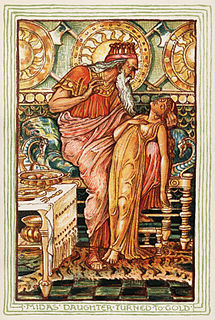
Midas is the name of one of at least three members of the royal house of Phrygia.

The Phoenician alphabet is an alphabet known in modern times from the Canaanite and Aramaic inscriptions found across the Mediterranean region. The name comes from the Phoenician civilization.
Gordias was the name of at least two members of the royal house of Phrygia.
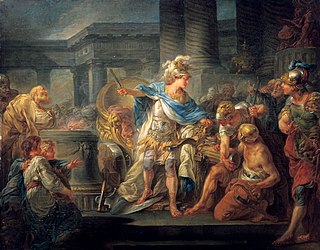
The Gordian Knot is an Ancient Greek legend of Phrygian Gordium associated with Alexander the Great. It is often used as a metaphor for an intractable problem solved easily by finding an approach to the problem that renders the perceived constraints of the problem moot :
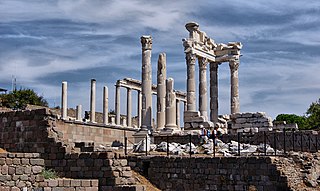
Mysia was a region in the northwest of ancient Asia Minor. It was located on the south coast of the Sea of Marmara. It was bounded by Bithynia on the east, Phrygia on the southeast, Lydia on the south, Aeolis on the southwest, Troad on the west and by the Propontis on the north. In ancient times it was inhabited by the Mysians, Phrygians, Aeolian Greeks and other groups.

The Greek Dark Ages is the period of Greek history from the end of the Mycenaean palatial civilization around 1100 BC to the beginning of the Archaic age around 750 BC.

The history of coins stretches back to the first millennium BC/BCE. Notable examples of early coins include the Lydian Lion coins, Persian daric and siglos, Tong Bei, with silver Dirham, and gold Dinar in the Umayyad Caliphate being the most universally recognized coins throughout history, including the Canadian Silver Maple Leaf, the American Gold Eagle, and the Australian Nugget.

The Phrygian language was the Indo-European language of the Phrygians, spoken in Anatolia, during classical antiquity.
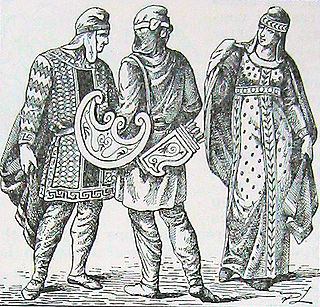
The Phrygians were an ancient Indo-European speaking people, who inhabited central-western Anatolia in antiquity. They were related to the Greeks.
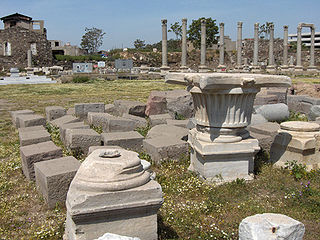
Aeolis, or Aeolia, was an area that comprised the west and northwestern region of Asia Minor, mostly along the coast, and also several offshore islands, where the Aeolian Greek city-states were located. Aeolis incorporated the southern parts of Mysia, and is bounded by it to the north, Ionia to the south, and Lydia to the east.
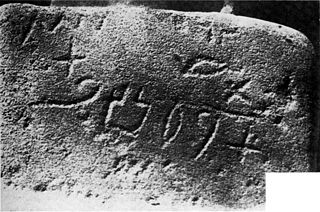
Proto-Sinaitic is considered the earliest trace of alphabetic writing and the common ancestor of both the Ancient South Arabian script and the Phoenician alphabet, which led to many modern alphabets including the Greek alphabet. According to common theory, Canaanites or Hyksos who spoke a Semitic language repurposed Egyptian hieroglyphs to construct a different script. The script is attested in a small corpus of inscriptions found at Serabit el-Khadim in the Sinai Peninsula, Egypt, dating to the Middle Bronze Age.

The history of the Greek alphabet starts with the adoption of Phoenician letter forms in the 9th–8th centuries BC during early Archaic Greece and continues to the present day. The Greek alphabet was developed during the Iron Age centuries after the loss of Linear B, the syllabic script that was used for writing Mycenaean Greek until the Late Bronze Age collapse and Greek Dark Age. This article concentrates on the development of the alphabet before the modern codification of the standard Greek alphabet.

Cyme or Cumae was an Aeolian city in Aeolis close to the kingdom of Lydia.

In classical antiquity, Phrygia was a kingdom in the west central part of Anatolia, in what is now Asian Turkey, centred on the Sangarios River. After its conquest, it became a region of the great empires of the time.

Gordion was the capital city of ancient Phrygia. It was located at the site of modern Yassıhüyük, about 70–80 km (43–50 mi) southwest of Ankara, in the immediate vicinity of Polatlı district. Gordion's location at the confluence of the Sakarya and Porsuk rivers gave it a strategic location with control over fertile land. Gordion lies where the ancient road between Lydia and Assyria/Babylonia crossed the Sangarius river. Occupation at the site is attested from the Early Bronze Age continuously until the 4th century CE and again in the 13th and 14th centuries CE. The Citadel Mound at Gordion is approximately 13.5 hectares in size, and at its height habitation extended beyond this in an area approximately 100 hectares in size. Gordion is the type site of Phrygian civilization, and its well-preserved destruction level of c. 800 BCE is a chronological linchpin in the region. The long tradition of tumuli at the site is an important record of elite monumentality and burial practice during the Iron Age.

The prehistory of Anatolia stretches from the Paleolithic era through to the appearance of classical civilisation in the middle of the 1st millennium BC. It is generally regarded as being divided into three ages reflecting the dominant materials used for the making of domestic implements and weapons: Stone Age, Bronze Age and Iron Age. The term Copper Age (Chalcolithic) is used to denote the period straddling the stone and Bronze Ages.

Yazılıkaya, Phrygian Yazılıkaya, or Midas Kenti is a village in Eskişehir Province, Turkey, located about 27 km south of Seyitgazi, 66 km south of Eskişehir, and 51 km north of Afyonkarahisar, which is known for its Phrygian archaeological remains and inscription mentioning Midas.

Tuwana was an Iron Age Luwian kingdom in southern Anatolia, one of the Syro-Hittite states, which existed in southeastern Anatolia in the 8th century BC.

Ancient Methone, also called Thracian or Macedonian Methone to distinguish it from Messenian Methone was a polis in Ancient Greece, near the city of Pydna and the modern village of Nea Agathoupolis in Pieria. According to Plutarch, Methone was founded as a Greek colony in the year 733/732 BC. Methone gained special importance by the finding of labeled pottery and potsherds. It is one of the oldest testimonies of Greek writing and an important place in the history of Pieria.
Hermodike II has been attributed with inventing coinage by Aristotle. Other historians have translated the name as Hermodice, Damodice or Demodike as translated by Julius Pollux.


















